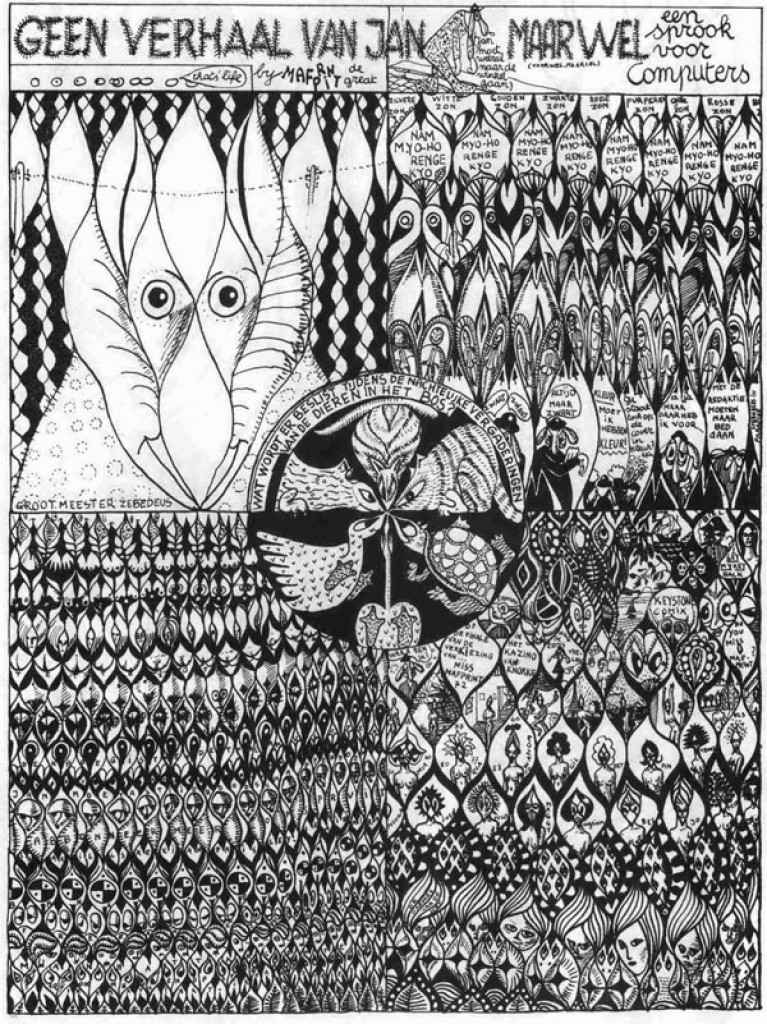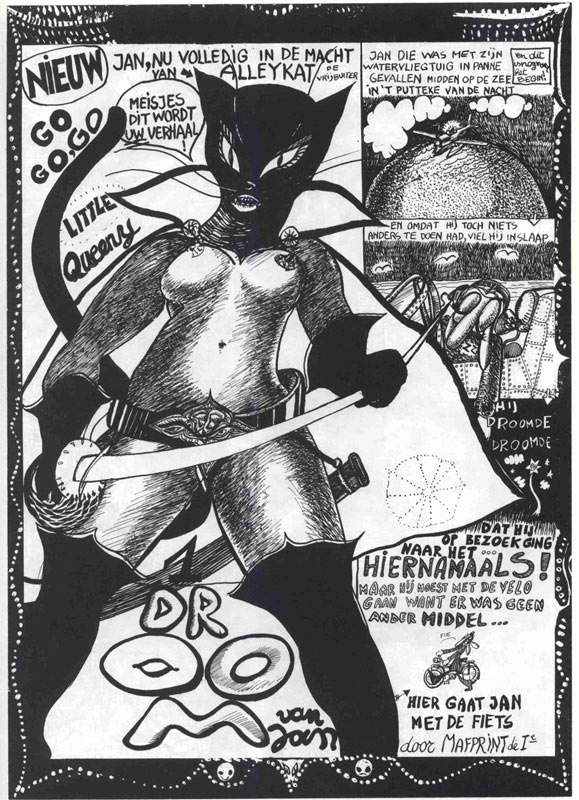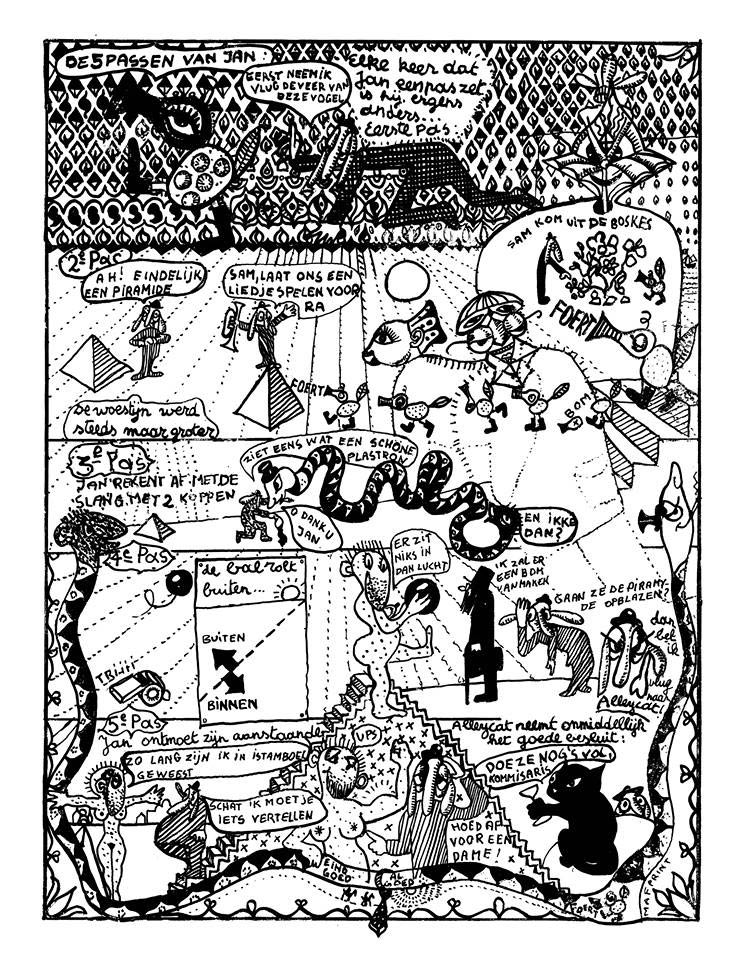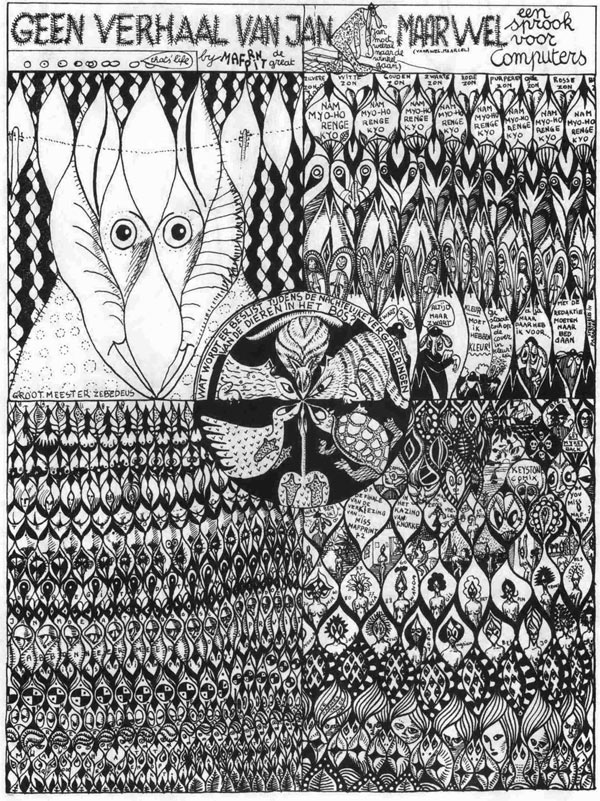George Smits was a Flemish author, painter, illustrator and musician, who claimed his goal was to create "cheap art forms for a wide audience". A fixture of Antwerp's underground art scene, he preferably described himself as a beatnik. In comic circles, he was best-known as a member of the ERCOLA art collective in the early 1970s. His signature series was 'De Avonturen van Jan', an underground comic which satirized the traditional adventure comic format. Smits is also known as "M.A.F. Print" and "Den Toet".
Early life and career
George Smits was born in 1944 in Antwerp. Between 1965 and 1967, he studied at the Sint-Lukas School of Arts in Brussels. There, he met the Belgian folk and protest singer Ferre Grignard, who achieved chart success outside of Belgium with his songs 'Ring, Ring, I've Got to Sing' (1966), 'My Crucified Jesus' (1966) and 'Drunken Sailor' (1966). Between 1965 and 1978, Smits played guitar and harmonica in Grignard's band, often performing in the Antwerp music café De Muze. Because of his capability to play harmonica, Smits received the nickname "Toet", which was also a nod to famous Belgian jazz harmonica player Toots Thielemans.
Starting in 1968, George Smits also created posters and comics based on automatic writing and free association under the banner "M.A.F. Print" (the Mad Artist Foundation), while also operating an experimental mobile silkscreen atelier. In 1967, Smits played a role in 'Cash? Cash' (1967), a film directed by Paul Collet.
ERCOLA
In August 1969, George Smits incorporated his M.A.F. Print activities in the Antwerp-based alternative art collective ERCOLA, short for "Experimental Research Center of Liberal Arts". ERCOLA had been founded in November of the previous year by the artists Jean-Claude Block and Jean-Claude Buytaert, author Dominique Donnet and photographer Piet Verbist, all former students from the Antwerp Fine Arts Academy. The launch of a comic art gallery in the ERCOLA building at the Grote Hondstraat attracted new members, including George Smits and the artist Luk Carlens. During the 1970s, more artists joined the collective, including Suzzy Bailleux, Werner Goelen (Griffo) and Wally van Looy. In late 1972, the collective moved into an historical block of buildings in the Wolstraat, where Smits also had his atelier. Whenever ERCOLA organized parties, Smits was usually given the job of deejay. This gave him the experience for his later radio career. George Smits was also affiliated with the Belgian painter and graphic artist Fred Bervoets, as well as the sculptor Panamarenko.
De Avonturen van Jan
Both as a group and individually, the ERCOLA members wanted to create experimental comics in the style of the U.S. underground comix movement, and founded two alternative magazines, Gimmick and Spruit. Smits' comic strip, 'De Avonturen van Jan', ran in nearly every issue of these magazines. A self-declared "anti-comic", 'De Avonturen van Jan' lampooned all conventions of traditional adventure comics. The comic strip's "hero" was named Jan, a truly uninspired choice of name for a fictional character, since it was the most common name given to boys in the Dutch-speaking countries. This was completely in line with the comic strip itself, as Jan's "adventures" were basically a series of banal events. Smits deliberately drew everything in a clumsy and chaotic, yet ironic way. In 2015, Peter Bonte collected this absurd and artistic comic strip in book format.
Visual arts
During this period, George Smits also received recognition with his light installations 'The Colour Company' at Jeune Peinture Belge. From the second half of the 1970s until the end of his life, Smits turned to painting in several styles and formats, often combining his trademark psychedelic style with the painting techniques of the Old Flemish Masters.
Soundscapes
Smits additionally had a musical career of his own, mostly in the experimental field. He named himself a "conceptual artist in sounds and images" and invented various experimental musical instruments. Especially during the 1980s, Smits toyed around with "sound sculptures" made of styrofoam, bamboo sticks, steel springs and cables. This resulted in performances such as 'ISOMOPOLIS' (1981) at Antwerp's I.C.C. (International Cultural Centre) and participation in 'Initiatif d'Amis' (1984) at the Vooruit in Ghent, and also many performances in the Netherlands.
As Captain Zbolk, he hosted the radio show 'Zbolk Night Radio' on the Antwerp experimental radio station Radio Centraal. In the 1990s, the show was broadcast every Tuesday after midnight, and combined electronic, digital and acoustic recordings. The name "Zbolk" was just a nonsense word one of his friends, Joost de Bruijne, had come up with. One decade later, Smits started mixing electronic, digital and acoustic recordings in his musical productions. His CD 'Zbolk Night Radio' was released in the spring of 1997.
Death
Only a few months after releasing his first musical album in 1997, George Smits died from cancer. He was the first member of the early ERCOLA group to pass away.





